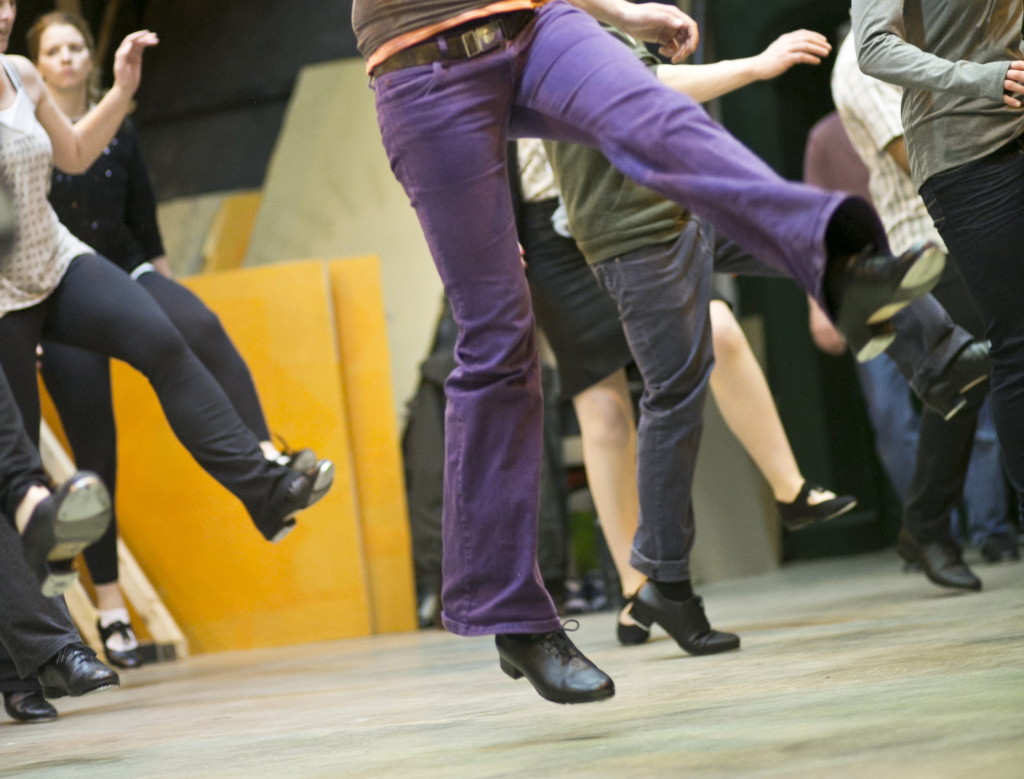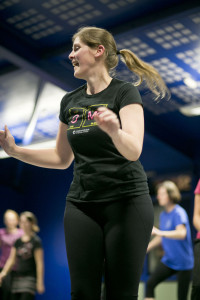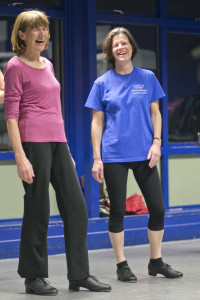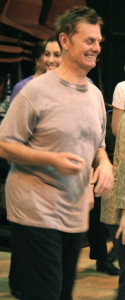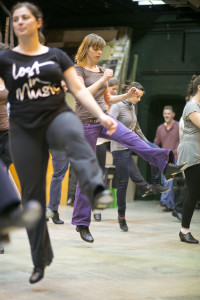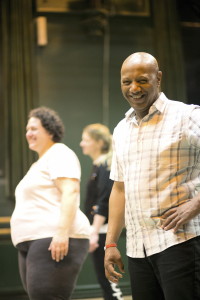FAQ
-
English or American tap – what’s the difference?
The tap taught in most dancing schools in the UK is based upon an English set syllabus which is geared towards passing exams. The syllabus has specific technical requirements against which you will be measured during your exam. You will also be assessed on timing, beat clarity and performance skills. Some people prefer learning a syllabus as they feel comfortable within its restrictions, enjoy repetition and feel more confident learning a ‘set’ style. For many children, the tap syllabus provides a solid grounding in dance alongside traditional ballet and modern classes – many dancing schools and parents measure their children’s success in terms of the exams they pass – whether or not this is a good thing obviously depends on your point of view!…
![Toe balance[1]](http://feetbeats.com/wp-content/uploads/2014/04/Toe-balance1-e1400850116486-1024x655.jpg)
On the other hand, it could be argued that a set syllabus leaves little room for creativity and rhythmical expression by the teacher or student. In any art form, innovation comes from experimentation. Anyone wanting to dance like Bill ‘Bo Jangles’Robinson, Eleanor Powell or the Nicholas Brothers needs to look further afield across the Atlantic at the rich cultural and artistic heritage from which tap was born.
‘American’ tap (sometimes called rhythm, freestyle or jazz tap) is essentially an African American art form and has always had a close relationship with the development of blues and jazz music, thus the use of challenging rhythms in the form of syncopation, cross phrasing and unusual accents and time signatures. A tapper is a musician as well as a dancer!
The impressively fast beating often seen in American tap is a result of close work – the feet stay near the floor with little elevation and the dancer appears to move effortlessly along whilst producing amazingly fast and accurate beats – although speed isn’t everything! Some of the greatest freestyle tap dancers have continued to dance well into their 70s and 80s – they may be less athletic, but years of refinement result in subtleties of timing and tone similar to those of an experienced jazz musician.
A freestyle tap class should be anything other than dull and repetitive – it should provide an opportunity to explore and play around with rhythm, rather than just copying or learning parrot fashion. Instead of laying down rigid requirements for arm and body positioning, a freestyle tap teacher is more likely to give guidelines which will allow his or her students to develop their own style and move in a way that suits their own body. By tap dancing to all different types of music you can refine your sense of timing and musical appreciation.
Which shoes to buy?
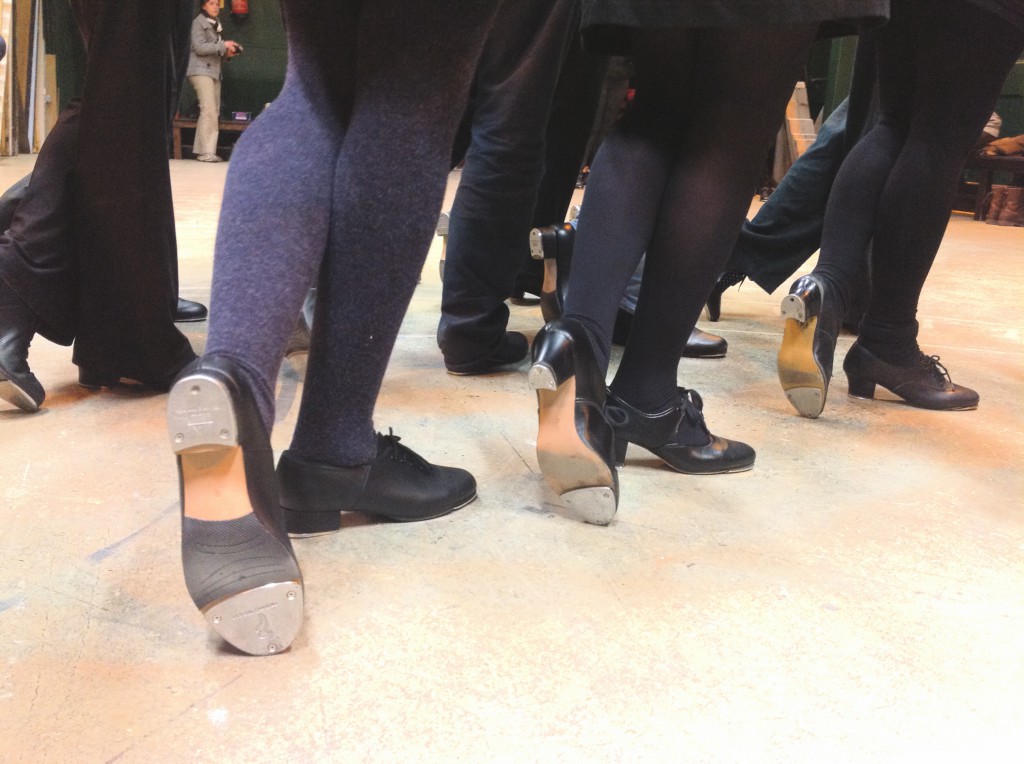
Buying your first pair of tap shoes can be a bewildering experience. First of all, find yourself a good dancewear supplier with staff who know what they are talking about! (Bristol based tappers, try Dancewell on Cotham Hill).
The following tips should help…
Canvas or leather?
These are the most basic and economical shoes you can buy. If money is an issue, or where children are concerned (as they grow out of shoes so quickly), then canvas is a good beginner’s choice. Leather shoes are more comfortable and hard wearing, but are going to be more expensive. Buy the best you can afford – serious tap dancers will always go for a top quality leather shoe.Open instep, or ‘Oxford’ style?
The open instep shoe is a more old fashioned style – some people still like to replace the laces with ribbbons! This style also tends to be cheaper than the alternative ‘Oxford’. The Oxford is like an ordinary lace up shoe, more masculine in appearance, but very supportive and hardwearing. If you are a keen tapper and want your shoes to last a long time and give you good support, then go for the Oxford.
High, (Cuban) heel or low heel?
In tap, as well making a noise with your heel you also need to keep it clear of the floor if you don’t want a heel sound. The higher the heel, the harder it is to keep it off the floor when you need to. If you are a beginner, you may prefer a lower heel because of this. In the end it comes down to comfort, looks and personal preference! With a lower heel, the actual tap is larger, which produces a richer sound.Screw-on taps or riveted taps?
In the UK, some manufacturers produce a basic shoe with riveted, curved taps. These can’t really be loosened and produce a very ‘dull’ sound, so they are not ideal. These taps can be replaced with American style taps, which are flatter and are fixed onto the shoe with screws. If possible, try to buy tap shoes with American taps already fitted to the toes and the heels.The screw driver – a tap dancer’s best friend. As your new tap shoes wear in, the taps can be finely ‘tuned’ to give a lively sound, without too much ringing or rattling. Taps that are too loose will rattle around so that you lose some clarity of beating – also, loose screws are likely to gouge out large chunks of your dancefloor! So keep your screw driver with you at all times and tune up regularly!
Do I need heel taps? – The short answer is – Yes! Otherwise it would be like having a drum kit without the bass drum! For more information on shoes, see www.dancewell.com
Can anyone learn to tap?
If you can move your feet and legs, then you can make rhythm with them (even sitting down!) Don’t be put off if you feel that both your feet are of the left variety, or you may have lost sight of your feet altogether behind an expanding waistline!
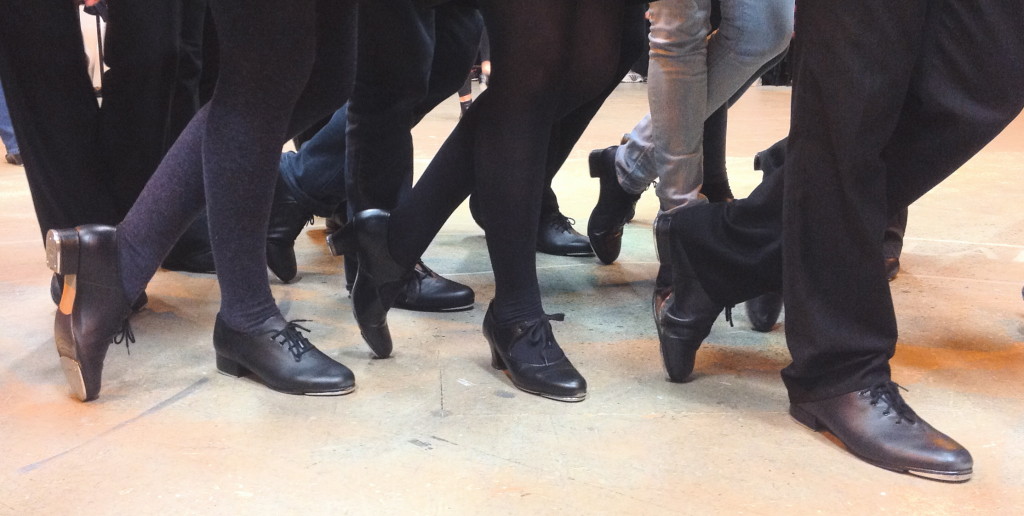
One of the joys of tap is its universal appeal – anyone can learn, regardless of their age or shape, and it’s a great way to exercise. (Will tap keep me fit?) In my own classes, the emphasis is on having fun with rhythm and learning within a relaxed, light-hearted atmosphere – even at beginner level, it’s amazing what you can achieve with only a few simple steps.
”…but I don’t have any rhythm…”
Many people would like to have a go at tap, but feel they haven’t got ‘any rhythm’. Rhythm is within all of us – everyone has tapped their foot or clicked their fingers in time with a favourite tune. Rhythm is all around us – in our bodies and our environment. The first sound we hear in the womb is the sound of our mother’s heartbeat; creating rhythm and making music is one of our most basic instincts – one that will surface even in the most adverse circumstances.
It is true that some people have a more well developed sense of rhythm and can effortlessly negotiate their way through complex rhythmical combinations with ease and flair. We can’t all be Fred Astaires or Ginger Rogers – but we can still derive immense pleasure from joining together simple tap steps and moving our bodies to music!
Will tap keep me fit?

Sue says… “As a dance and exercise professional, I am constantly aware of the immense benefits that participating in tap dance can bring to the individual. However, if you have had a recent illness or injury, are overweight, or are an older person who has not exercised in years, then it’s a good idea to check with your doctor, nurse or physio before you embark on any new programme of physical activity. If you are not sure, then please email me for advice…”
How can tap benefit our health?…
Cardiovascular fitness (heart, lungs, stamina…)
Participating in a tap class will raise your heart rate – the amount depends on the speed of movement and whether or not you use arm movements. For an otherwise healthy individual, getting slightly out of breath is good for our heart and lungs. Current guidelines recommend that we get a little breathless for at least 30 minutes, 5 days of the week. That 30 minutes can be in short bursts – which tends to be what happens in a tap class. So – regular tapping can help to keep your heart healthy!Muscular strength / endurance…
The constant movement and changing of weight in tap means that it is particularly good for strengthening thighs, lower leg and buttock muscles. The deep abdominal and back muscles are also activitated when changing weight and direction, to keep our ‘centre’ strong. In any dance class, we learn about posture and improved quality of movement – tap is no exception!Flexibility…
Tap is particularly good for mobilising the ankle, hip and knee joints, and, if regular stretching exercises are undertaken at the end of the class when the body is warm, flexibility may be increased.Motor skills…
Tap is fantastic for improving skills such as balance, co-ordination and agility. Having to remember combinations of steps certainly challenges our brain as well as our body!Bone strength…
Tap is a fantastic bone loading exercise. Our bones are living things, which respond to the forces of gravity by becoming stronger. In tap, the impact of the foot hitting the floor travels through the body, thus helping to keep our bones strong and healthy. (Exercise involving impact may not be suitable for those with osteoporosis or arthritis. Please check with your health professional).A sense of well being..
A good tap class is a fun, social event – a great way to meet other like minded people and make new friends. We can also feel a great sense of achievement and satisfaction when we have mastered new skills (even with the inevitable frustration along the way when we don’t quite get it right!) If you ever get the chance to perform with your class, then take it! There is nothing like the ‘buzz’ you get when performing in front of an audience!
